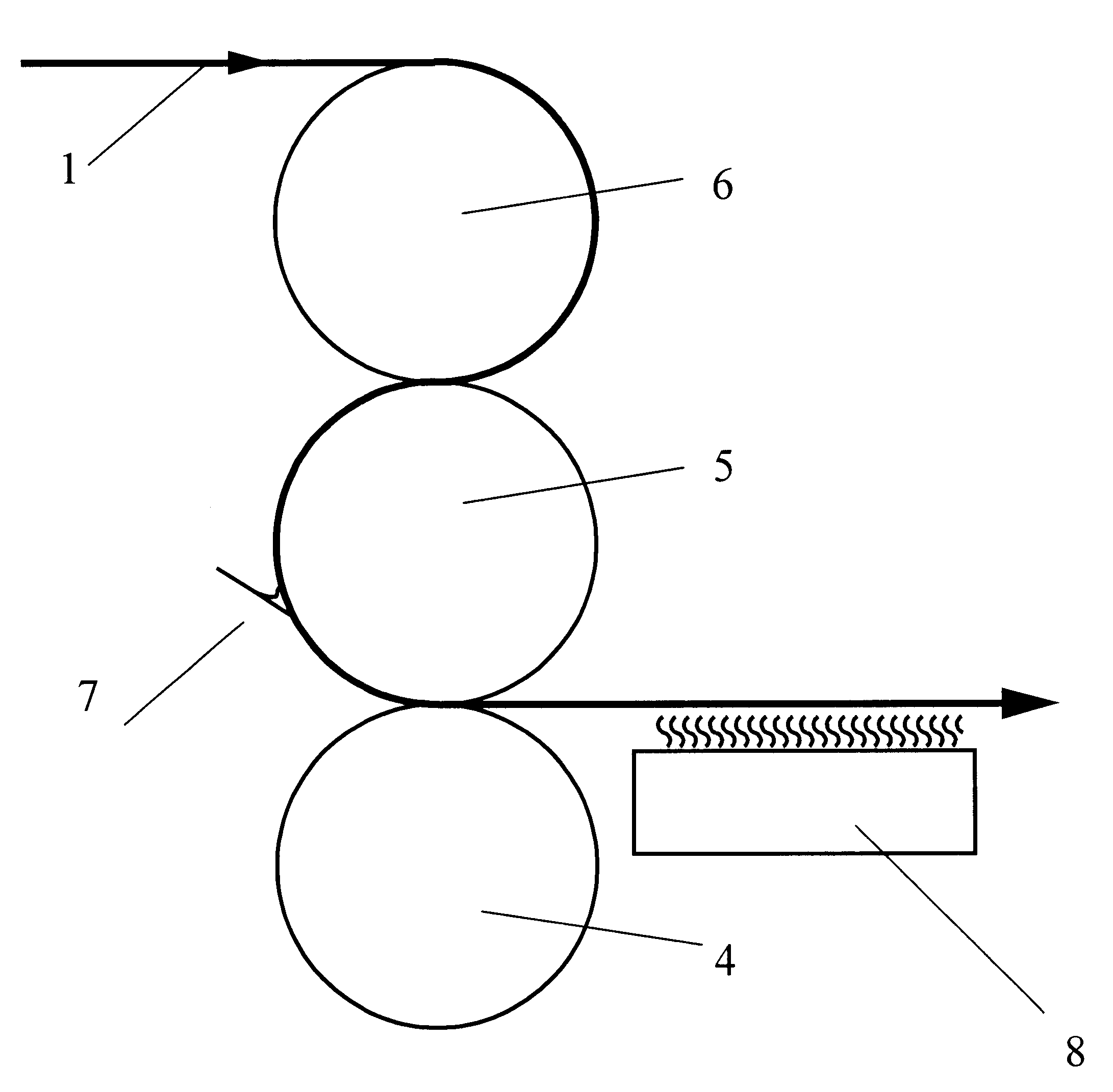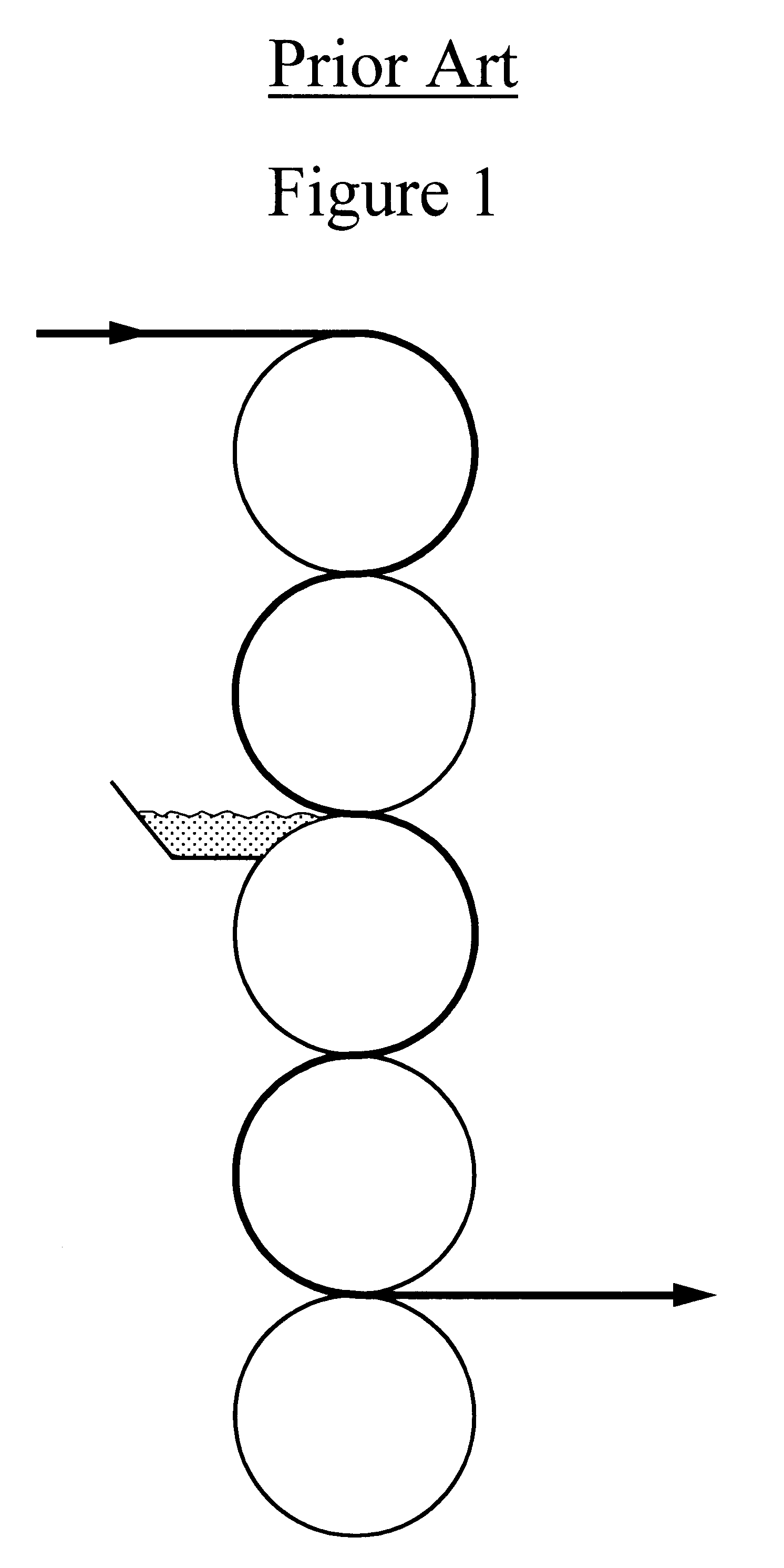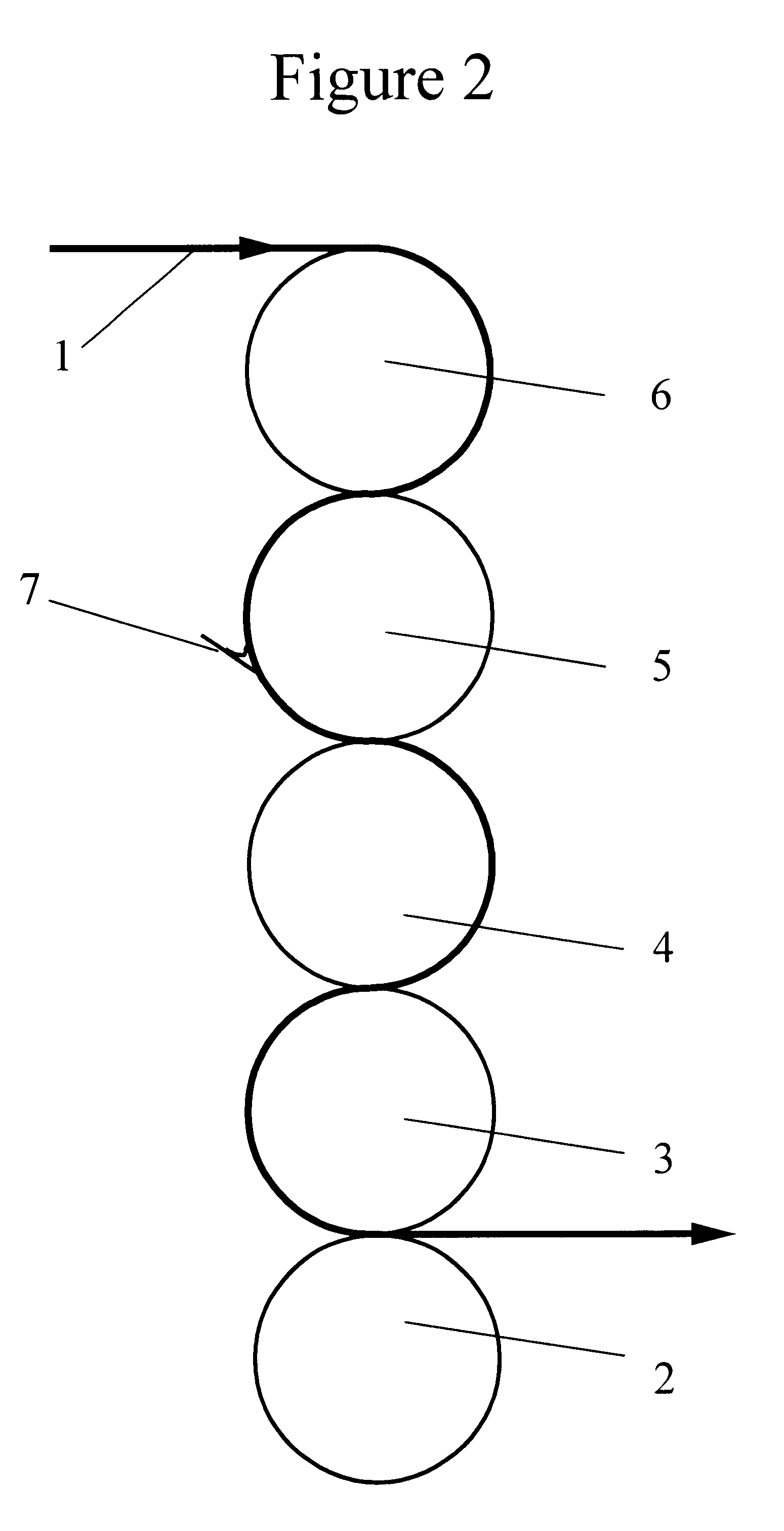Method for smoothening a paper web before coating
a paper web and coating technology, applied in the direction of press section, manufacturing tools, non-fibrous pulp addition, etc., can solve the problems of short-lived smoothness, adverse reaction of untreated webs of paper or paperboard raw materials, and inability to achieve the effect of pre-calendering a dry web
- Summary
- Abstract
- Description
- Claims
- Application Information
AI Technical Summary
Benefits of technology
Problems solved by technology
Method used
Image
Examples
example 1
Preliminary experiments have shown that a pre-dried basestock at 1.75% moisture that was wet calendered at 80, 400 and 800 fpm using a 400 degree F. hot roll nipped with another steel roll, according to the invention, or with a suitable soft roll, produced essentially similar results. After pre-calendering at 800 fpm with about 6 lb. / ream water applied, followed by coating of the pre-calendered basestocks, both the hot soft nip and the hot steel nip gave a 0.2 lb. / caliper point lower density compared with cold wet calendering. In the case of the hot steel nip, the lowered density was correlated to post-wrap of about 6 inches around the hot roll. The lowered density was observed at approximately equal Parker PrintSurf or Sheffield.
example 2
In another experiment a 10-point basestock (about 120 lbs. / ream basis weight), was wet calendered at 80 fpm with a 340.degree. F. hot roll using both a soft nip and a steel-steel nip. The web after exiting the nip was wrapped around the hot roll by varying distances up to about one foot. Both the hot, wet steel calendering and hot, wet soft calendering gave similar smoothness / density results. Meanwhile the presence or absence of post-nip drying by wrapping the hot roll did not significantly affect the smoothness / bulk characteristics.
PUM
| Property | Measurement | Unit |
|---|---|---|
| temperature | aaaaa | aaaaa |
| operating temperatures | aaaaa | aaaaa |
| temperature | aaaaa | aaaaa |
Abstract
Description
Claims
Application Information
 Login to View More
Login to View More - R&D
- Intellectual Property
- Life Sciences
- Materials
- Tech Scout
- Unparalleled Data Quality
- Higher Quality Content
- 60% Fewer Hallucinations
Browse by: Latest US Patents, China's latest patents, Technical Efficacy Thesaurus, Application Domain, Technology Topic, Popular Technical Reports.
© 2025 PatSnap. All rights reserved.Legal|Privacy policy|Modern Slavery Act Transparency Statement|Sitemap|About US| Contact US: help@patsnap.com



